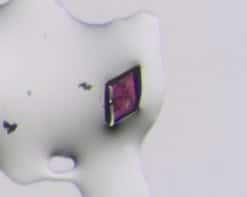
Researchers in Australia have created a single-atom transistor by planting an individual phosphorus dopant atom within a silicon sample with a spatial accuracy of plus or minus one lattice spacing. The research builds on earlier work by the same group allowing the creation of atomic-scale electrodes. While the transistor may currently help toward the continued miniaturization of classical electronics, the researchers hope that in the future their device will help develop a functional quantum computer.
Moore’s Law
The transistor is basically an electronically activated switch and is at the root of all computing. Without it processors would be unable to perform the logical operations required of them. Moore’s Law, named after the founder of Intel, Gordon Moore, has predicted that the number of transistors that can be crammed on to a commercial integrated circuit will double approximately every two years. When Moore made his prediction in 1965, he predicted that it would hold true until 1975, when, he suggested correctly, there would be about 65,000 transistors on each chip. In fact, it has proved uncannily accurate and still holds roughly true today, when there are billions. However, continued miniaturization requires the development of new manufacturing techniques, and – for Moore’s law to continue – devices will have to hit the single-atom scale around the year 2020.
In earlier work, Michele Simmons’ research group at the University of New South Wales in Sydney developed a technique allowing it to create atomic wires inside crystals of bulk silicon by selectively removing individual lines of silicon atoms and replacing them with phosphorus. Phosphorus has one more electron in its outer shell than silicon, so replacing a silicon atom with a phosphorus atom within a silicon crystal introduces a free electron to the material and raises the local conductivity. The team used this technique to fashion nanoscale transistor electrodes in the crystal. It then placed a single phosphorus atom in the centre of the transistor. The result was an atomic-scale version of a field-effect transistor (FET).
A quantum transistor
The current passing between the source and drain electrodes of a classical FET increases smoothly with the voltage between the gate and drain electrodes. But the atomic-scale FET produced by the New South Wales group, in collaboration with colleagues at the University of Melbourne, University of Sydney, the Korea Institute for Science and Technology Information and Purdue University in Indiana, US, behaved in a quantum-mechanical manner, becoming conductive only when the potential difference was aligned precisely with one of the energy levels of the phosphorus atom. “You change the bias on the gate and as you change the bias you will access the energy levels of the atom,” explains Simmons. “You go from conducting to insulating, to conducting to insulating as you go through the atomistic energy levels of that single-atom device.”
Cryogenic laptops and quantum computers
Physicist and electrical engineer David Ferry of Arizona State University in Tempe, US, believes the work is “another interesting example of making a very small structure and placing phosphorus atoms where they want them on a surface”. But he questions whether a transistor that can only carry one electron at a time will ever run fast enough to be of much use to the electronics industry. There are also other practical difficulties with the device, such as that it only works with cryogenic refrigeration. As Ferry says, “I don’t think you want to carry your laptop around at liquid-helium temperatures.”
Simmons accepts that the technology is not currently industrially compatible. “It is really a test of technology,” she says. “How far can you push things to deterministically make a single-atom device? Its long-term applicability to conventional industry is completely unknown: it just gives a marker in the sand that there is technology to be able to make it.”
The group’s main interest in using the transistor was to study the energy levels of the phosphorus atom within the silicon lattice, which the researchers hope to use as qubits in a quantum computer. “This is a transistor that we’ve designed so that we can look at the energy levels and check that we get agreement with what’s been theoretically predicted,” says Simmons. “In the computer, the phosphorus atoms will be essentially talking to one another in a lattice. You won’t necessarily have source and drain electrodes to each atom like you would in a conventional transistor for that device.”
The research is published in Nature Nanotechnology.



